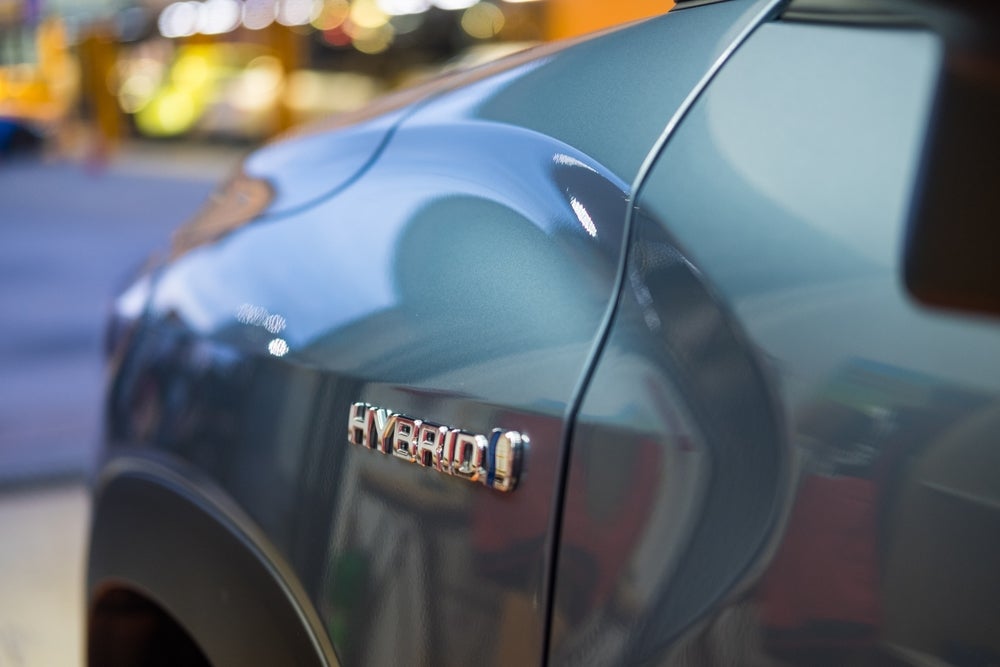As automakers plan to bring out more hybrid-electric models, we hear from LMC Automotive on their forecasts for the evolution of the global hybrid market.
Every major vehicle maker – even the historically resistant Germans – now acknowledges that it must have hybrid-electric vehicles in its powertrain portfolio. Their major market is in North America, followed by Japan, whose tax structures provide significant incentives for very fuel-efficient vehicles.
Many OEMs are bullish on prospects. Ford recently told just-auto that by 2020 it expects 10-25% of its sales to be electrified vehicles – BEVs, hybrids and plug-in hybrids – versus 1% now. The vast majority of that gain is accounted for by hybrids.
“Some of the OEMs appear a little over-optimistic,” says LMC analyst Al Bedwell. “The OEM forecasts for hybrid penetration of the global car market vary – with some outliers – but there’s a general consensus that we will be seeing a big volume increase over the next decade.”
Market prospects for full hybrids, those using parallel or power-split architectures that offer all-electric running (if only for short distances), appear rosier than those for mild hybrids of the sort popularised by Honda.
Those mild systems incur the expense of a battery pack and all the electric machinery of a full system, but their smaller scale and reduced capability is not matched by a commensurate reduction in price. Put simply, a full hybrid system with two or three times the capability of a mild system costs less than two to three times as much. Thus forecasters see hybrid vehicles largely defined by full hybrid systems.
How well do you really know your competitors?
Access the most comprehensive Company Profiles on the market, powered by GlobalData. Save hours of research. Gain competitive edge.

Thank you!
Your download email will arrive shortly
Not ready to buy yet? Download a free sample
We are confident about the unique quality of our Company Profiles. However, we want you to make the most beneficial decision for your business, so we offer a free sample that you can download by submitting the below form
By GlobalDataOutlook for hybrid-electric passenger vehicle demand
Although global demand for hybrid electric vehicles (including mild hybrids) reached 1m units in 2011, the figure was a modest rise (of 6%) over the 2010 achievement and represents less than 2% of global personal vehicle demand (including North American light trucks) according to LMC Automotive. Relatively few new mainstream hybrid models were introduced and although demand in some markets was strongly driven by incentives, the basket of choices available to consumers remains small.
Geographically, Asia is the biggest market for hybrids, but of the hybrids sold there in 2011 Japan accounted for more than 80%.
China hybrid sales were negligible at just over 5,000 units and were less than 1% of all regional hybrid sales. The Asia share of the global hybrid market is 55%, the US accounts for a further 30% with most of the remainder finding buyers in Europe.
The LMC Automotive forecast for hybrid demand shows a notable uptick in 2012 and beyond as a raft of models are released onto the market. At the same time the prospect of elevated road fuel prices continues to focus buyers’ minds on efficient vehicles.
“In most regions, carmakers are increasingly required to populate their fleets with models that can achieve high levels of fuel efficiency,” says Bedwell.
LMC estimates that in 2011 there were around 60 hybrid models with significant sales volume available globally. By the end of 2012 this figure will have increased to 90 models with global hybrid sales approaching 1.5m units.
New models include the Buick Regal eAssist, Ford C-Max hybrid, Toyota Prius C/Aqua, Toyota Yaris hybrid, Chevrolet Malibu eAssist, BMW 3/5 Series hybrid and Acura ILX hybrid.
A significant further number of hybrid models are in the pipeline with almost all OEMs participating. While the battery electric vehicle market is struggling to take off, hybrids face an easier route to acceptance.
“The barriers that are holding back BEV sales (limited range, lack of re-charging infrastructure, high acquisition price and very limited choice of vehicle) do not apply to the hybrid sector,” says Bedwell. The LMC Automotive hybrid vehicle forecast shows 275 mainstream hybrid models being available globally by 2022.
“By 2022 we expect the market for these vehicles to grow to circa 4m units per annum. This would represent around 4% of global passenger vehicle demand,” he says. “But the penetration of hybrids varies considerably by market and this will continue to be the case. Although it will have the highest growth rate in hybrid ownership, Europe will continue to lag as diesel will remain the first choice for medium and large cars through the next decade.”
Bedwell thinks that North America will see the largest volume growth in hybrid ownership over the period, driven by tough CAFE laws. China, however, will remain relatively small in hybrid terms.
“While China will see significant growth in its hybrid vehicle market, it will remain small compared with Japan unless we see a greater focus on new energy vehicles from Chinese administrators,” he adds.







